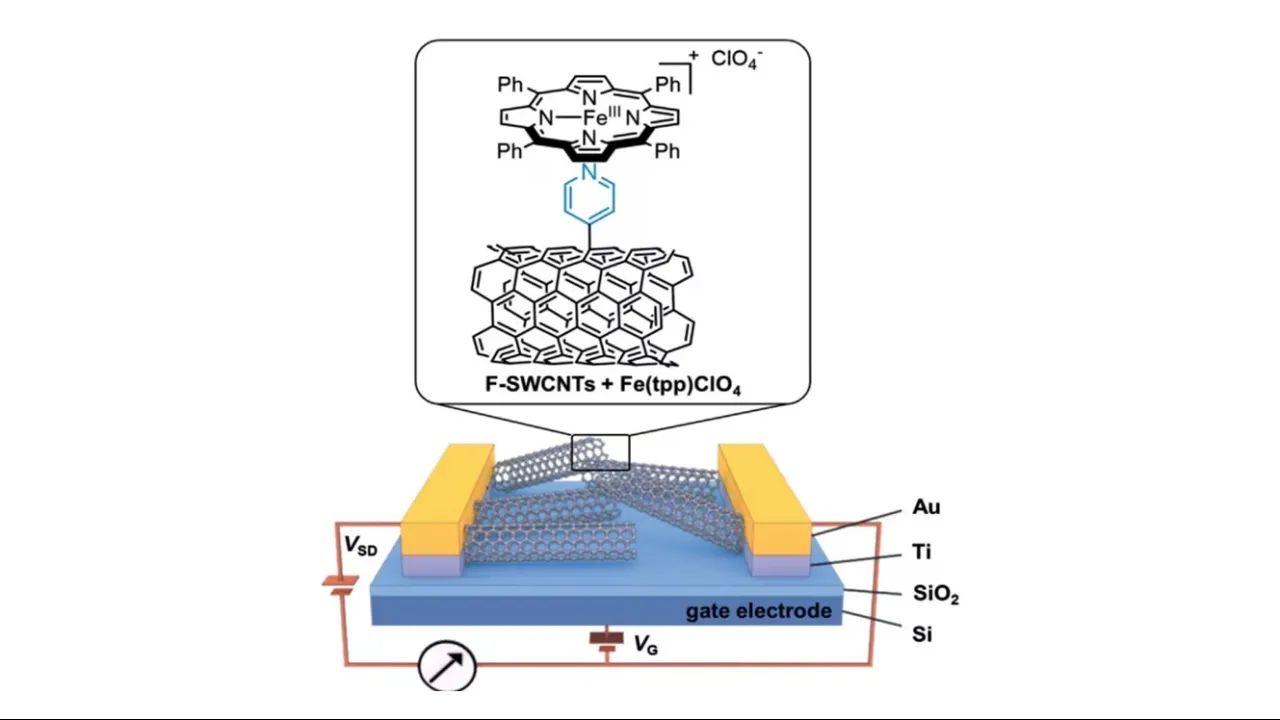
Bio‐Inspired Carbon Monoxide Sensors with Voltage‐Activated Sensitivity
About
Savagatrup Suchol, et al. "Bio‐Inspired Carbon Monoxide Sensors with Voltage‐Activated Sensitivity." Angewandte Chemie 129 (45) ,2017, 14254.
Carbon monoxide (CO) outcompetes oxygen when binding to the iron center of hemeproteins, leading to a reduction in blood oxygen level and acute poisoning. Harvesting the strong specific interaction between CO and the iron porphyrin provides a highly selective and customizable sensor. We report the development of chemiresistive sensors with voltage‐activated sensitivity for the detection of CO comprising iron porphyrin and functionalized single‐walled carbon nanotubes (F‐SWCNTs). Modulation of the gate voltage offers a predicted extra dimension for sensing. Specifically, the sensors show a significant increase in sensitivity toward CO when negative gate voltage is applied. The dosimetric sensors are selective to ppm levels of CO and functional in air. UV/Vis spectroscopy, differential pulse voltammetry, and density functional theory reveal that the in situ reduction of FeIII to FeII enhances the interaction between the F‐SWCNTs and CO. Our results illustrate a new mode of sensors wherein redox active recognition units are voltage‐activated to give enhanced and highly specific responses.